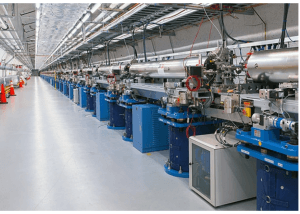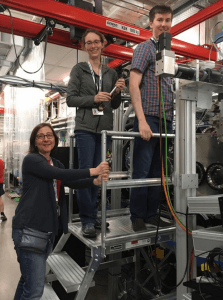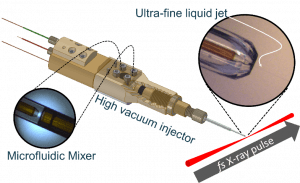Using the Ultra-fast to unlock the Ultra-small

In the Pollack lab, we use the world’s most powerful X-ray lasers to watch biomolecules perform critical functions, with atomic detail. These cutting-edge X-ray facilities, X-ray Free Electron Lasers, (currently only five in the world) accelerate electrons to almost the speed of light in a mile-long particle accelerator, before launching them through strong magnetic fields to generate extremely short, extremely bright, laser pulses of X-rays. A single pulse is so intense that it destroys any material in its focus. Here at Cornell, we develop specialized technology and instrumentation to handle the extreme experimental conditions at X-ray Free Electron Lasers.

A main thrust is the development of specialized microfluidic devices called mixing injectors, which precisely control the timing between initiating a biological reaction and introducing the sample into the beam for analysis (1). Using these devices, we can acquire snapshots of a molecule as it functions, to piece together the details of these complex interactions. These snapshots yield great understanding of fundamental biological processes, or provide knowledge of structural intermediates that could become future drug targets. For example, we have used these devices to study the mechanism for antibiotic resistance in tuberculosis (2).

References
- G. Calvey et al. Structural Dynamics 3 0045301 (2016)
- J. L. Olmos Jr. et al., BMC Biology, 16:59 (2018).